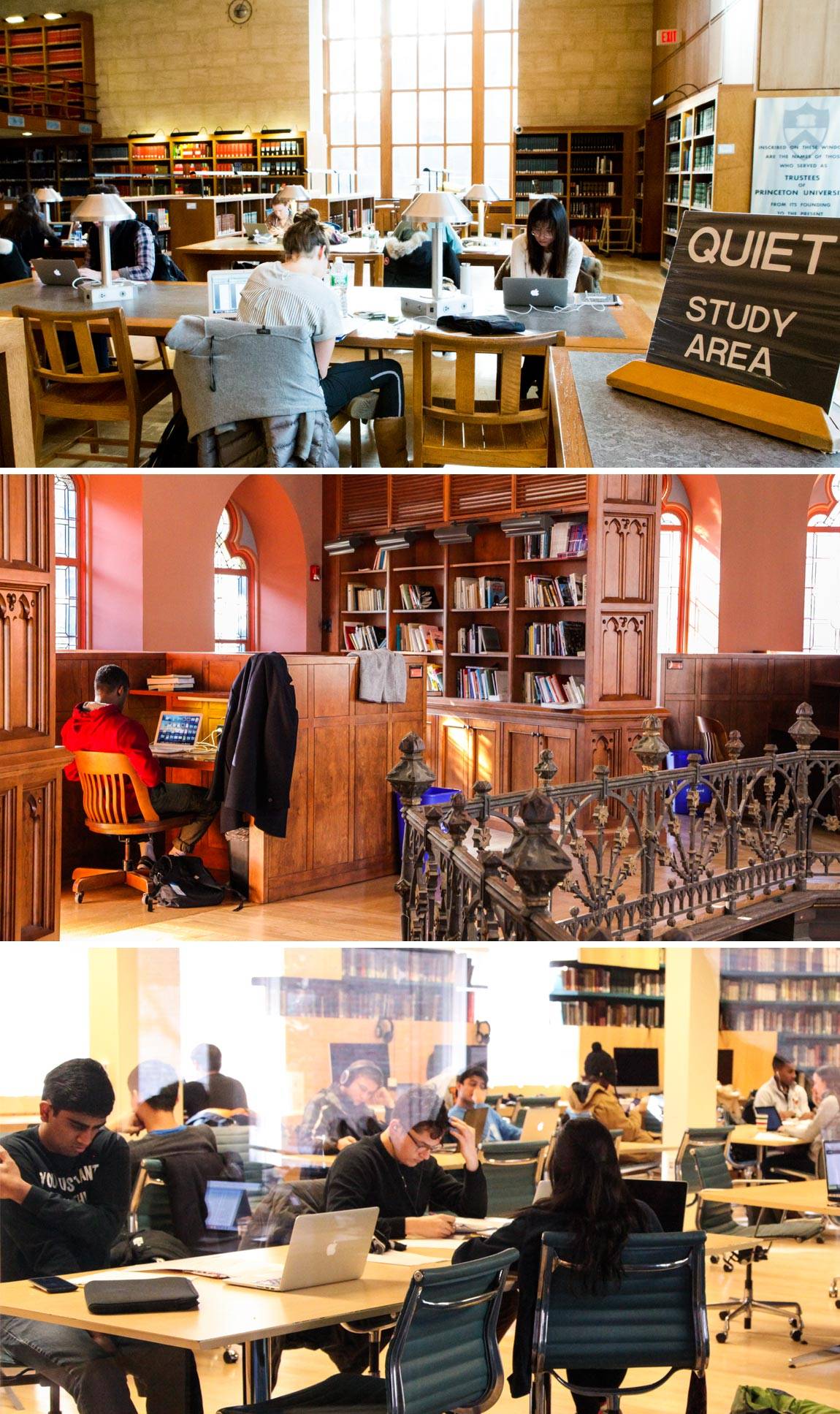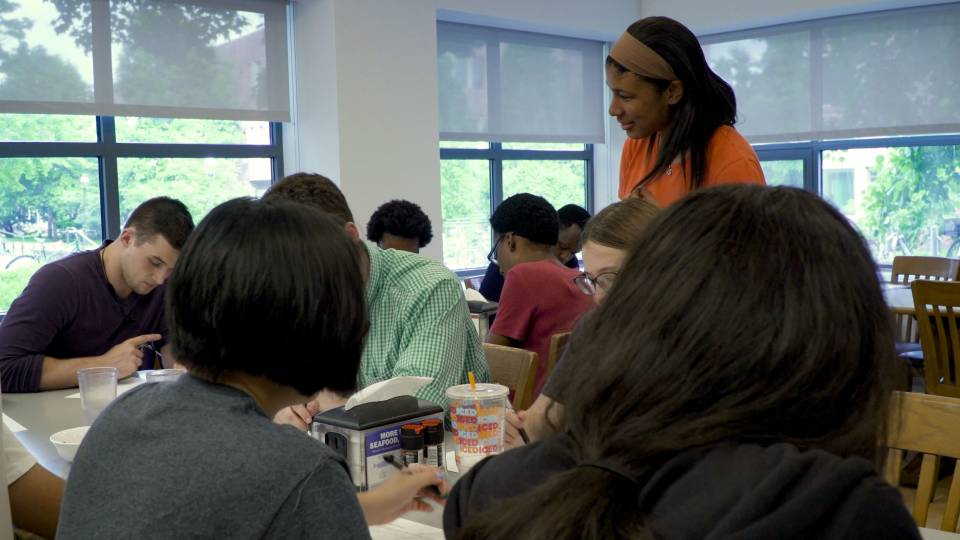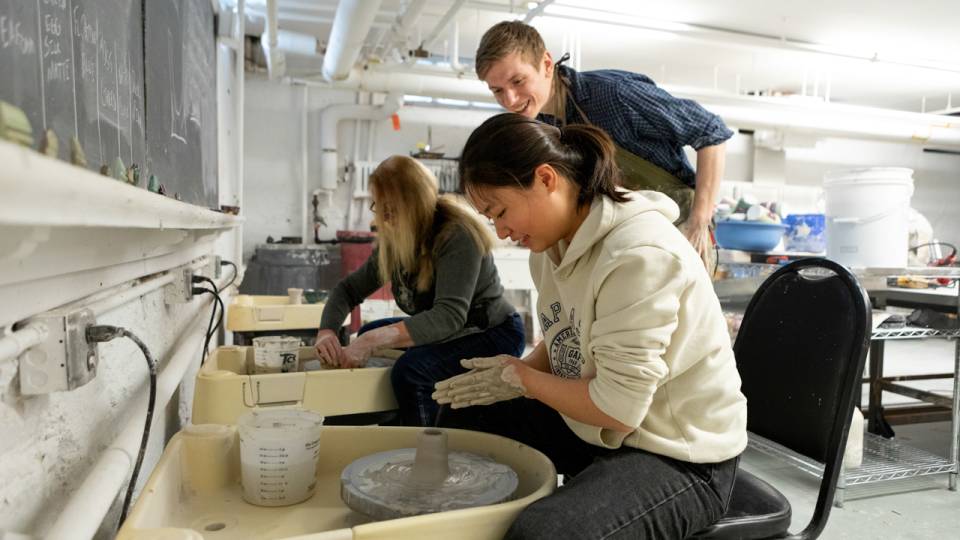In 1928, The Daily Princetonian's editorial board wondered if scheduling a formal study time between classes and final exams — a Reading Period — would be valuable.
"Would undergraduates be scattered all the way from White Springs to Quebec, or would they really stay in Princeton to study?" the student newspaper wrote March 22, 1928.
Fast-forward nearly 90 years and the answer is yes. Princeton University students spent the past week and a half on campus finishing final papers and projects, and studying for fall-term exams scheduled Jan. 13-23.
Princeton's Reading Period refers to the approximately 10 days preceding fall- and spring-term exams. The Dean's Date by when students must submit all written coursework is the last day of Reading Period.

Students pet therapy dog Ben E. during Counseling and Psychological Services' open house at University Health Services. Students said spending the afternoon with the standard poodle was a great break from studying.(Photo by Blake Hamilton, Office of Communications)
"I think Reading Period is definitely a necessity," sophomore Abigail Scott said while working on her laptop in a quiet corner of Chancellor Green. "It's really nice to have this week to just focus."
Reading Period was implemented for all undergraduates in the 1939-40 academic year after being available to juniors and seniors. The goal was to give students focused and extended time to prepare for exams, according to Daily Princetonian articles from the time.
Today, Reading Period is not just about studying hard but doing so in a way that is productive and healthy. All across campus, there were food-filled study breaks, academic support sessions and de-stress activities. Students sat at long tables in Firestone Library reading and typing papers, while others attended tutoring sessions and study-skills workshops at the McGraw Center for Teaching and Learning.
Reading Period this year also coincided with the student-organized Mental Health Week, allowing students to unwind by petting a therapy dog or learning mindfulness meditation. Reading Period concluded Tuesday afternoon with a Dean's Date celebration in McCosh Courtyard and a night of ice skating at Baker Rink.
The spring term begins Monday, Feb. 1.

(From top to bottom) There are many places to study on campus during Reading Period. Students sit quietly in Firestone Library; spend a sunny afternoon in a carrel in Chancellor Green; and work at tables in the Julian Street Library at Wilson College. (Top photo by Denise Applewhite and middle/bottom photos by Nick Barberio, Office of Communications)

Students fill their plates during Whitman College's midnight breakfast buffet. The buffet was one of many food-filled breaks for students studying for fall-semester finals. (Photo by Denise Applewhite, Office of Communications)

Nic Voge, associate director of the McGraw Center for Teaching and Learning, leads the study-skills workshop "Making the Most of Reading Period: Planning for Dean's Date and Final Exams." The McGraw Center held various academic support events during Reading Period. (Photo by Danielle Alio, Office of Communications)

Mental Health Week offered a number of ways for students to de-stress in between studying for exams, including a mindfulness meditation session in the Wilson College Dance Studio led by staff from University Health Services. (Photo by Nick Barberio, Office of Communications)

Students enjoy a night of ice skating at Baker Rink to mark the end of Reading Period. Final exams are scheduled Jan. 13-23. (Photo by Denise Applewhite, Office of Communications)

The Undergraduate Student Government gives away black and orange tiger paw socks at the Dean's Date celebration in McCosh Courtyard. Dean's Date, which falls on the last day of Reading Period, is when students must submit all written coursework before final exams begin. (Photo by Danielle Alio, Office of Communications)








